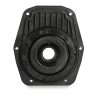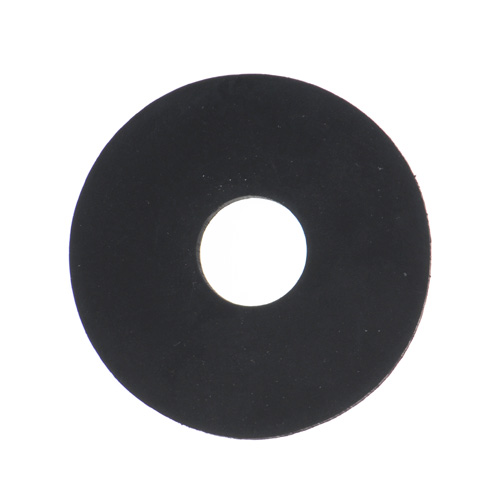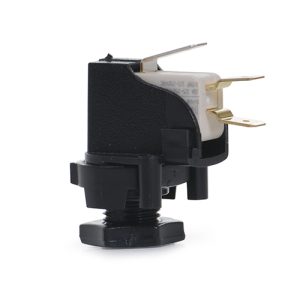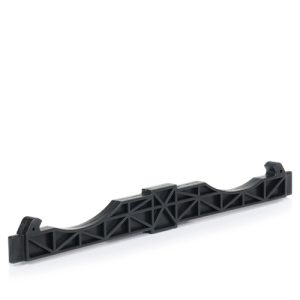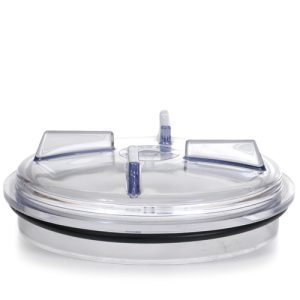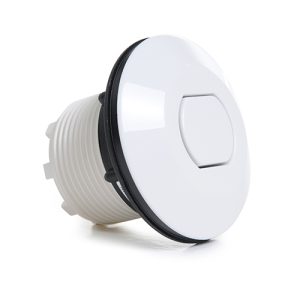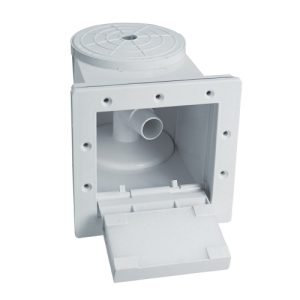Aquamite / Supastream Pump Motor Slinger – 42 x 16 x 2
£11.90 Inc VAT
Out of stock
Want to be notified when this product is back in stock?
Aquamite / Supastream Pump Motor Slinger – 42 x 16 x 2
Motor Protection Component for Extended Equipment Life
As a retailer of pool and spa parts, I stock this replacement motor slinger for Aquamite and Supastream pumps. This small disc-shaped component plays a vital protective role by preventing water from reaching the motor bearings, significantly extending motor life and preventing costly failures.
What is a Motor Slinger?
A motor slinger (also called a slinger ring or moisture slinger) is a disc that attaches to the motor shaft between the seal plate and the motor. As the shaft rotates at high speed—typically 3,450 rpm—the slinger spins with it, creating centrifugal force that throws any water droplets outward and away from the motor bearings.
This component measures 42mm outer diameter, 16mm inner diameter, and 2mm thickness, specifically sized to fit Aquamite and Supastream pump motor shafts. Made from durable plastic or composite material, it’s designed to spin continuously without degrading or coming loose.
How the Slinger Works
The slinger operates on a simple but effective principle. If the mechanical seal develops a minor leak or if condensation forms in the seal area, water droplets could migrate along the motor shaft toward the bearings. Left unchecked, this moisture causes bearing corrosion and premature motor failure.
When the shaft spins, the slinger rotates with it. Any water that touches the slinger’s surface is immediately flung outward by centrifugal force, away from the motor. The water droplets are thrown toward the pump housing walls where they drain harmlessly away rather than continuing along the shaft into the motor.
Think of it as a spinning umbrella that protects the motor bearings. Even though it doesn’t create a watertight seal, the centrifugal action effectively prevents water migration under normal operating conditions.
Why the Slinger Matters
Motor bearings are precision components that require clean, dry conditions to function properly. Even small amounts of water cause corrosion that pits the bearing surfaces, leading to noise, vibration, and eventual seizure. Replacing motor bearings is expensive and labour-intensive—far more costly than replacing a slinger.
The slinger provides insurance against minor seal weepage. Mechanical seals can develop slight seepage as they wear, particularly during the first few hours after installation as the seal faces wear in. The slinger prevents this normal seepage from causing motor damage.
Condensation can form in the seal area due to temperature differences between the warm motor and cooler water. This moisture would migrate toward the motor without the slinger’s protective action. In humid climates or during cool weather operation, condensation risk increases.
The slinger also catches any spray or splash that might occur during seal failure. While it can’t stop a major seal leak, it provides some protection during the brief period before you notice the problem and shut down the pump.
Signs Your Slinger Needs Replacement
Visible damage is the most obvious indicator. If the slinger is cracked, broken, or has pieces missing, it cannot perform its protective function. Inspect the slinger whenever you have the pump disassembled for other maintenance.
If the slinger has become loose on the shaft, it may not spin properly or could come off entirely during operation. A loose slinger provides no protection and may cause additional problems if it jams between components.
Evidence of water reaching the motor bearings suggests the slinger may be missing or damaged. Water stains on the motor housing near the shaft entry point, rust on the shaft, or corroded bearings all indicate moisture has bypassed the slinger.
Unusual bearing noise—grinding, squealing, or rumbling—may result from water damage that occurred because of a failed or missing slinger. While the bearing damage itself requires attention, replacing the slinger prevents recurrence.
Installation Location and Procedure
The slinger installs on the motor shaft behind the seal plate, positioned between the mechanical seal and the motor bearing housing. It must fit snugly on the shaft to ensure it rotates with the shaft rather than slipping.
During pump assembly, slide the slinger onto the shaft before installing the impeller and seal components. Its position is critical—too close to the seal and it may interfere with seal operation; too far toward the motor and it loses effectiveness.
The slinger should be positioned so there’s a small gap between it and the seal plate, allowing any water that passes the seal to contact the spinning slinger surface where centrifugal force throws it outward.
Check that the slinger is properly seated and cannot slide along the shaft. Some designs have a slight interference fit that holds the slinger in position; others rely on being trapped between components during assembly.
When Replacement is Necessary
Replace the slinger whenever you rebuild the pump or replace the motor. Once removed, slingers may not maintain their grip on the shaft, making them ineffective when reinstalled. The modest cost makes replacement during any major maintenance a wise investment.
If you’re replacing the mechanical seal due to leakage, inspect the slinger carefully. Water exposure may have degraded the material, and a new seal deserves the protection of a fresh slinger.
Any visible damage warrants immediate replacement. Cracks, warping, or missing sections mean the slinger cannot protect the motor properly. Don’t risk expensive motor damage to save the small cost of a replacement slinger.
If the pump has operated without a slinger (perhaps it was lost during previous maintenance), install one as soon as possible. The motor may have already sustained bearing damage, but installing a slinger prevents further deterioration.
Material and Design Considerations
Slingers are manufactured from durable plastics that can withstand continuous high-speed rotation without degrading. The material must resist water, pool chemicals, and the temperatures generated by the motor.
The inner diameter is precisely sized to fit the specific motor shaft diameter, ensuring a snug fit that prevents slipping. The outer diameter is designed to maximize centrifugal effect—larger diameters throw water more effectively, but must fit within the available space.
The thickness affects rigidity and balance. Too thin and the slinger may flex or warp at high speeds; too thick and it adds unnecessary weight to the rotating assembly. The 2mm thickness specified for this component represents the optimal balance.
Compatibility
This motor slinger with dimensions 42 x 16 x 2mm is specifically sized for Aquamite and Supastream pump motor shafts. Using the correct size ensures proper fit and effective moisture protection. An incorrectly sized slinger may slip on the shaft or fail to spin at the correct speed, compromising protection.
These reliable pumps are found in countless residential installations, making the slinger a frequently needed component during pump rebuilds and motor replacements.
Product Specifications
| Specification | Details |
|---|---|
| Product Type | Motor Slinger / Moisture Slinger |
| Compatibility | Aquamite and Supastream pumps |
| Function | Protects motor bearings from moisture |
| Material | Chemical-resistant plastic |
| Dimensions | 42mm OD x 16mm ID x 2mm thick |
| Application | Mounts on motor shaft behind seal plate |
| Operation | Centrifugal force throws water away from motor |
| Weight | 0.01 kg |
| Dimensions (L × W × H) | 0.06 m × 0.06 m × 0.01 m |
| Volume | 0.001 cubic meters |
| SKU | 6497240366 |
| Category | Pool & Spa Spares |
Preventive Maintenance
While the slinger itself requires no maintenance once installed, its effectiveness depends on other components working properly. Maintain the mechanical seal in good condition to minimize water leakage. Regular seal inspections and timely replacement prevent excessive water from overwhelming the slinger’s protective capacity.
Monitor motor bearing condition through regular listening checks. Smooth, quiet operation indicates healthy bearings protected by a functioning slinger. New noises suggest moisture or other problems requiring investigation.
During any pump disassembly, take a moment to verify the slinger is present and intact. It’s easy to overlook this small component, but its absence can lead to expensive motor damage over time.
Keep spare slingers on hand so you’re prepared during pump maintenance. At this modest cost, having extras available prevents delays when rebuilding pumps or replacing motors.
This simple component provides inexpensive insurance against costly motor bearing damage, making it an essential part of proper pump maintenance and assembly procedures.
| Weight | 0.01 Kilograms |
|---|---|
| Length | 0.06 Meters |
| Width | 0.06 Meters |
| Height | 0.01 Meters |
| Volume | 0.001 CubicMeters |
| Supplier | GoldenC |
Related products
Spares


